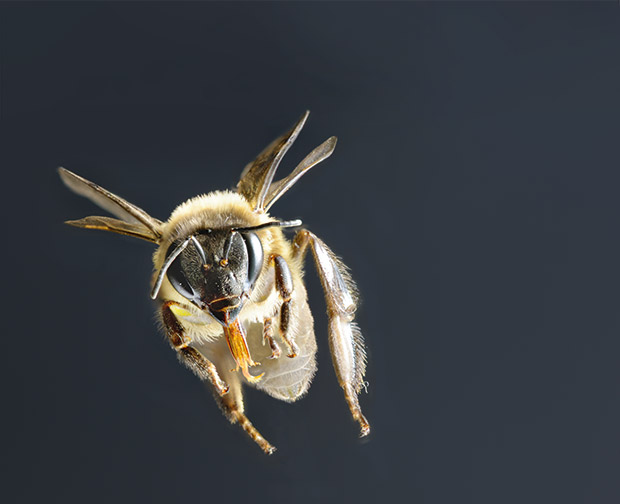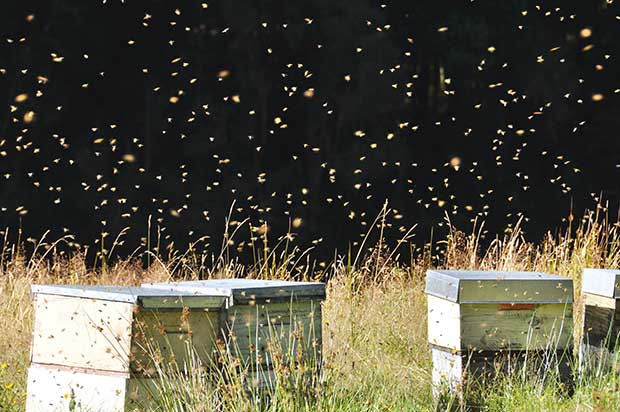5 amazing things you may not know about the honeybee

Prepare to bee amazed.
1. They’re watching you from every angle
The honeybee, Apis mellifera has five eyes. The large compound eyes are made up of thousands of lenses. These sit at different angles creating one image, allowing bees to see colour and shapes in their surroundings. Unlike other bee species, the compound eyes are covered in hairs spaced one grain of pollen wide so the bee can easily comb it out.
There are also three one-lens ocelli that sit on top of the head. These tiny eyes detect light intensity and direction, and are used for navigation. Bees can see most colours that humans can, and can also see ultra-violet light.
2. Hairy beasts
The hairs all over a bee’s body are evenly spaced and branched, allowing them to carry up to 30% of their body weight in pollen. The hairs on the legs are much closer together and act as combs, so a bee can clean pollen off its body once it’s back in its hive.
3. Why they’re the best pilots

The antennae of bees are sensors that help them work out their landing distance and angle so they can smoothly land on a surface, even if it’s an unusual shape, or moving. As bees near a surface, they slow down and hover over it. They use their antennae to judge its orientation and move in at the right angle, until they’re 16mm away. If they’re landing vertically, they put down a front foot first; horizontally, they put down a hindleg first.
4. The Swiss army knife they carry
A worker bees’ mandibles move from side to side and are used as arms to carry and move things inside the hive, as knives to carve up food, as brushes for grooming, as scissors to cut flower petals, and like teeth to chew wood.
Between the mandibles are the mouthparts, including the proboscis, a tube within a tube. The outer tube sucks up water. The inner tube has taste buds and is used for gathering nectar.

New research shows older worker bees wear out their mouthparts as they age but make up for the damage by moving them faster during nectar gathering so they maintain the same feeding rate as young ones.
5. The remarkable brain inside a honeybee’s head
A bee’s brain is about the size of a sesame seed. It’s denser than the brains of mammals and contains almost a million neurons (the human brain has about 100 billion). Otago University research has shown that alpha oscillations in bee brains (wave-like electrical activity) have similar properties to human brains. Bees can:
■ make complex calculations on distance, and communicate it to other bees (ie, the ‘bee waggle dance’ where a bee moves its body in particular patterns to explain where to find a food source);
■ remember colours and landmarks, often by smell;
■ understand abstract relationships – Australian researchers taught bees to identify specific colours, then used one of the colours to indicate the way through a maze, which the bees then figured out.
It’s believed one reason they’re so smart is because they live in a highly organised, cooperative group and they know everything they do impacts on others.
Other research found bees learn best in the morning (which is also when nectar levels in flowers are high), and save easier tasks for later in the day.
Sources: hiveandhoneyapiary.com, localhivehoney.com

In Your Backyard: Beekeeping includes everything a beginner beekeeper needs to know about hive life, and harvesting honey. It’s easy beesy with this beautiful and inspirational magazine full of detailed, step-by-step information and video tutorials. Brought to you by the teams from NZ Life & Leisure, NZ Lifestyle Block, and thisnzlife.co.nz

